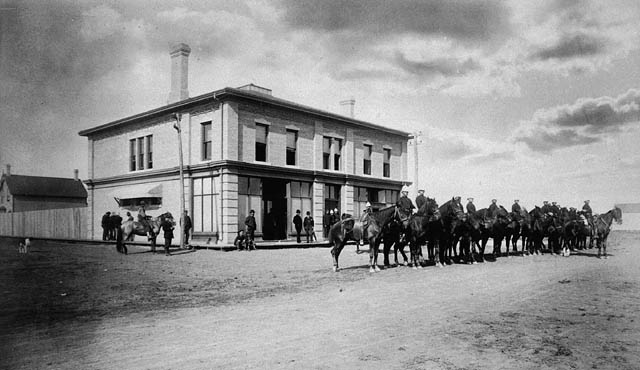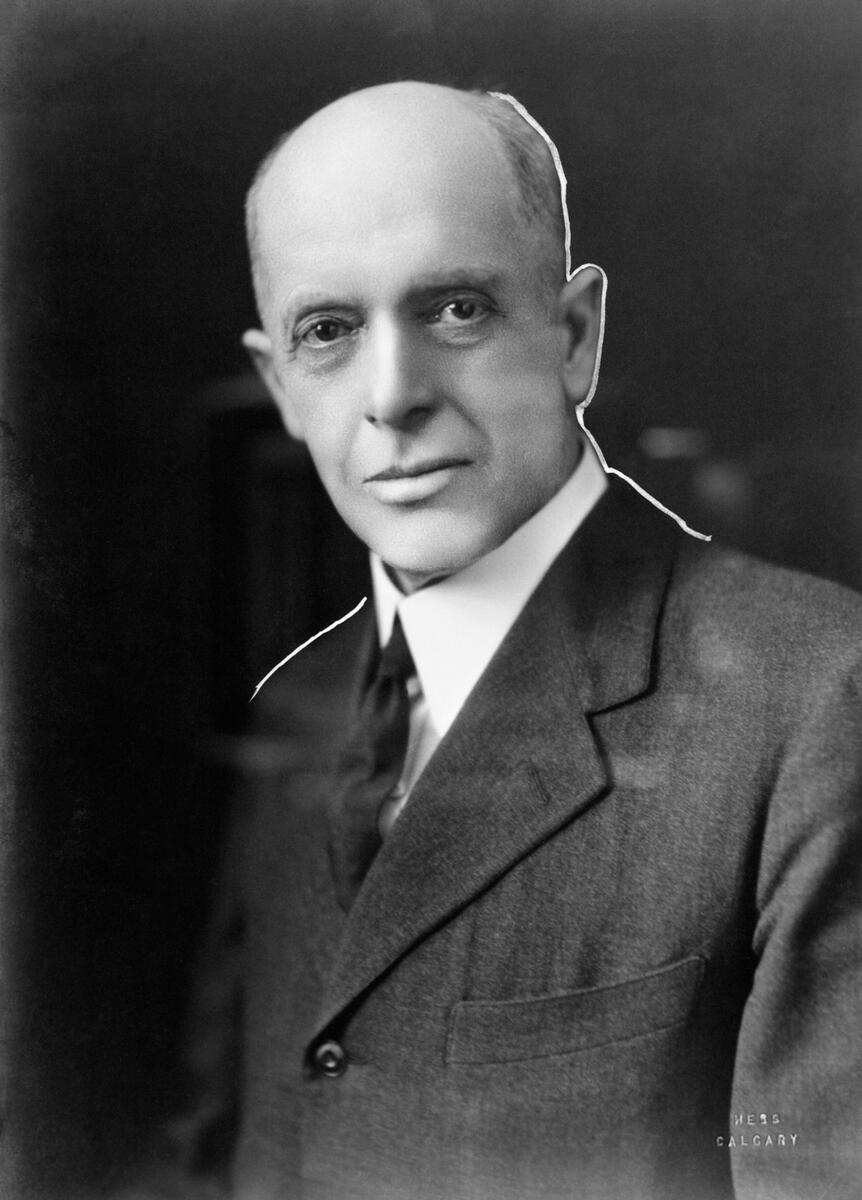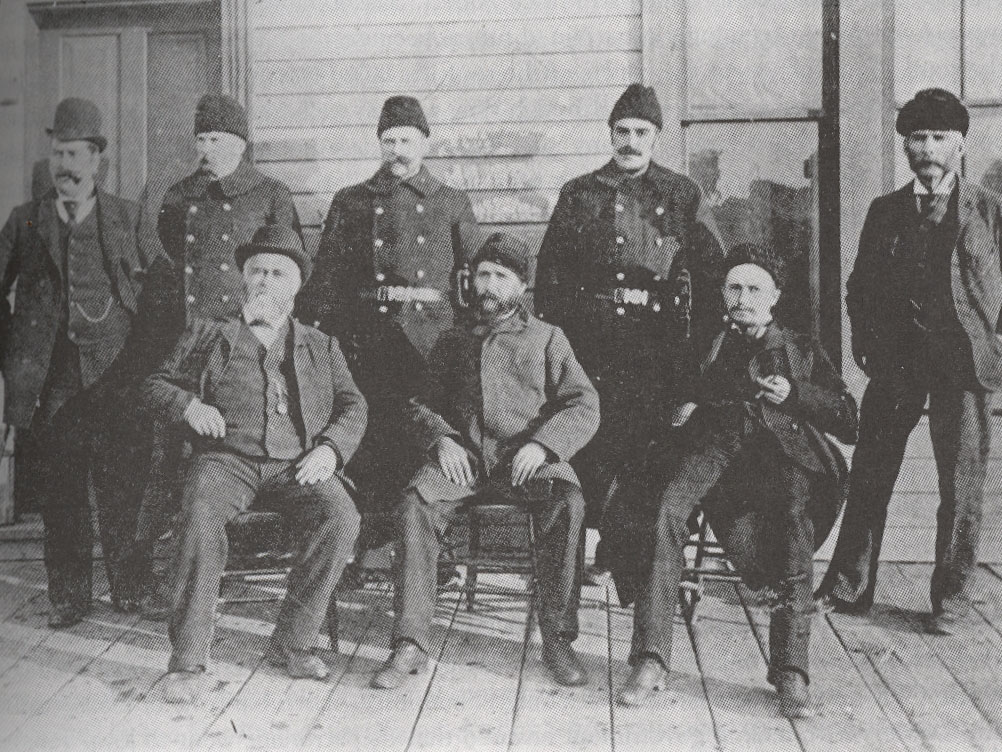|
John R. Boyle
John Robert Boyle, (February 1, 1870 or February 3, 1871 – February 15, 1936) was a Canadian politician and jurist who served as a Member of the Legislative Assembly of Alberta, a cabinet minister in the Government of Alberta, and a judge on the Supreme Court of Alberta. Born in Ontario, he came west and eventually settled in Edmonton, where he practiced law. After a brief stint on Edmonton's first city council, he was elected in Alberta's inaugural provincial election as a Liberal. During the Alberta and Great Waterways Railway scandal, he was a leader of the Liberal insurgency that forced Premier Alexander Cameron Rutherford from office. Though initially left out of cabinet by Arthur Sifton, Rutherford's successor, Boyle was named Minister of Education in 1912. He served in this capacity until 1918, during which time he alienated many non-English speakers by insisting on a unilingual English school system. In 1918 he was made Attorney-General. He retained his seat in the l ... [...More Info...] [...Related Items...] OR: [Wikipedia] [Google] [Baidu] |
List Of Alberta Official Opposition Leaders
The leader of the Official Opposition, formally known as the leader of His Majesty's Loyal Opposition, is the member of the Legislative Assembly (MLA) who leads the Official Opposition, typically the second largest party in the provincial legislature. Rachel Notley, who leads the New Democratic Party (NDP), has served as the leader of the Opposition since April 30, 2019. Alberta has enjoyed long periods of stable government rule, and has elected massive government majority during almost every election in its history. In most other legislatures in Canada, the opposition party is traditionally recognized as a government in waiting, and will alternate periods of government among two or three parties. In Alberta however the opposition has traditionally been very small in terms of seat numbers, and highly unstable in terms of party leadership. Until Jason Kenney‘s United Conservative Party (UCP) formed government in 2019, Peter Lougheed was the only leader of the Opposition who has ... [...More Info...] [...Related Items...] OR: [Wikipedia] [Google] [Baidu] |
Supreme Court Of Alberta
The Court of King's Bench of Alberta (abbreviated in citations as ABKB or Alta. K.B.) is the superior court of the Canadian province of Alberta. Until 2022, it was named Court of Queen's Bench of Alberta. The Court of Queen's Bench in Calgary was relocated to the Calgary Courts Centre in 2007. The Court of King's Bench has been located at the Law Courts building in Edmonton since the 1970s. History The court originates from the old Supreme Court of the Northwest Territories. Two years after Alberta became a province in 1905, the court was reorganized as the Supreme Court of Alberta and several lower district courts possessing a more limited jurisdiction. In 1921, the Supreme Court was reorganized to have an independent trial division (Supreme Court of Alberta Trial Division), and an independent appellate division (Supreme Court of Alberta Appellate Division), the precursor to the Court of Appeal of Alberta. On June 30, 1979, the Supreme Court Trial Division was renamed as "Court ... [...More Info...] [...Related Items...] OR: [Wikipedia] [Google] [Baidu] |
John Robert Boyle And Family
John is a common English name and surname: * John (given name) * John (surname) John may also refer to: New Testament Works * Gospel of John, a title often shortened to John * First Epistle of John, often shortened to 1 John * Second Epistle of John, often shortened to 2 John * Third Epistle of John, often shortened to 3 John People * John the Baptist (died c. AD 30), regarded as a prophet and the forerunner of Jesus Christ * John the Apostle (lived c. AD 30), one of the twelve apostles of Jesus * John the Evangelist, assigned author of the Fourth Gospel, once identified with the Apostle * John of Patmos, also known as John the Divine or John the Revelator, the author of the Book of Revelation, once identified with the Apostle * John the Presbyter, a figure either identified with or distinguished from the Apostle, the Evangelist and John of Patmos Other people with the given name Religious figures * John, father of Andrew the Apostle and Saint Peter * Pope John ... [...More Info...] [...Related Items...] OR: [Wikipedia] [Google] [Baidu] |
Pilot Butte, Saskatchewan
Pilot Butte (; cr, script=Latn, Otasawâpiwin ), meaning "lookout point", is a town in southeast Saskatchewan. Situated between Highway 46 and the Trans-Canada Highway, the town is part of the White Butte region and neighbours Balgonie, White City, and the province's capital city, Regina. As of the 2021 Canadian census, Pilot Butte had a population of 2,638, an 23% growth from 2016. The town is governed by the Pilot Butte Town Council and is surrounded by the Rural Municipality of Edenwold No. 158. Pilot Butte is located in Treaty 4 territory. Prior to European arrival, local Indigenous peoples camped near Boggy Creek and used the butte as a lookout point. European settlement began in the area in the 1840s, and Pilot Butte was established in 1882. Pilot Butte's early development was more substantial than neighbouring settlements thanks to its brick plants, sand and gravel deposits, and location on the Canadian Pacific Railway mainline. The community incorporated as a village ... [...More Info...] [...Related Items...] OR: [Wikipedia] [Google] [Baidu] |
Regina, Saskatchewan
Regina () is the capital city of the Provinces and territories of Canada, Canadian province of Saskatchewan. The city is the second-largest in the province, after Saskatoon, and is a commercial centre for southern Saskatchewan. As of the 2021 Canadian census, 2021 census, Regina had a List of cities in Saskatchewan, city population of 226,404, and a List of census metropolitan areas and agglomerations in Canada, Metropolitan Area population of 249,217. It is governed by Regina City Council. The city is surrounded by the Rural Municipality of Sherwood No. 159. Regina was History of Northwest Territories capital cities, previously the seat of government of the Northwest Territories, North-West Territories, of which the current provinces of Saskatchewan and Alberta originally formed part, and of the District of Assiniboia. The site was previously called Wascana ("Buffalo Bones" in Cree), but was renamed to Regina (Latin for "Queen") in 1882 in honour of Queen Victoria. This decisio ... [...More Info...] [...Related Items...] OR: [Wikipedia] [Google] [Baidu] |
Lambton County, Ontario
Lambton County is a county in Southwestern Ontario, Canada. It is bordered on the north by Lake Huron, which is drained by the St. Clair River, the county's western border and part of the Canada-United States border. To the south is Lake Saint Clair and Chatham-Kent. Lambton County's northeastern border follows the Ausable River and Parkhill Creek north until it reaches Lake Huron at the beach community of Grand Bend. The county seat is in the Town of Plympton-Wyoming. The largest city in Lambton County is Sarnia, which is located at the source of the St. Clair River at Lake Huron. The two Blue Water Bridges cross the river at Sarnia, connecting it to Port Huron, Michigan. The bridges are one of the busiest border crossings between the two countries. The river is also traversed by one passenger ferry further south, and a rail tunnel, also at Sarnia, runs underneath it. The CN rail tunnel accommodates double stacked rail cars. Along with Sarnia, the population centres in Lambton Co ... [...More Info...] [...Related Items...] OR: [Wikipedia] [Google] [Baidu] |
Irish Canadian
ga, Gael-Cheanadaigh , image = Irish_Canadian_population_by_province.svg , image_caption = Irish Canadians as percent of population by province/territory , population = 4,627,00013.4% of the Canadian population (2016) , popplace = , region1 = Provinces: , region2 = Ontario , pop2 = 2,095,460 , region3 = British Columbia , pop3 = 675,135 , region4 = Alberta , pop4 = 596,750 , region5 = Quebec , pop5 = 446,215 , region6 = Nova Scotia , pop6 = 201,655 , region7 = New Brunswick , pop7 = 135,835 , region8 = Newfoundland and Labrador , pop8 = 106,225 , langs = English French Irish (historically) , rels = , related = Irish, Ulster-Scots, English Canadians, Scottish Canadians, Welsh Canadians, Irish Americans, Scotch-Irish Canadians Irish Canad ... [...More Info...] [...Related Items...] OR: [Wikipedia] [Google] [Baidu] |
Scottish Canadian
Scottish Canadians are people of Scottish descent or heritage living in Canada. As the third-largest ethnic group in Canada and amongst the first Europeans to settle in the country, Scottish people have made a large impact on Canadian culture since colonial times. According to the 2016 Census of Canada, the number of Canadians claiming full or partial Scottish descent is 4,799,010, or 13.93% of the nation's total population. However, some demographers have estimated that the number of Scottish Canadians could be up to 25% of the Canadian population. Prince Edward Island has the highest population of Scottish descendants at 41%. The Scots-Irish Canadians are a similar ethnic group. They descended from Lowland Scots people via Ulster and observe many of the same traditions as Scots. Categorically, Scottish Canadians comprise a subgroup of British Canadians which is a further subgroup of European Canadians. History Early Scottish settlement Scottish people have a long his ... [...More Info...] [...Related Items...] OR: [Wikipedia] [Google] [Baidu] |
1921 Alberta General Election
The 1921 Alberta general election was held on July 18, 1921, to elect members to the 5th Alberta Legislative Assembly. It was one of only five times that Alberta has changed governments. The Liberal Party, which had governed the province since its creation in 1905, led by Charles Stewart at the time of the election, was defeated by a very-new United Farmers of Alberta political party. The UFA was an agricultural lobby organization that was contesting its first general election. It had previously elected one MLA in a by-election. Under the Block Voting system, each voter in Edmonton and Calgary could vote for up to five candidates, while Medicine Hat voters could vote for up to two candidates. All other districts remained one voter – one vote. No party ran a full slate of candidates province-wide. The UFA ran candidates in most of the rural constituencies, and one in Edmonton. The Liberal Party ran candidates in almost all the constituencies. The Conservatives ran a bare dozen ... [...More Info...] [...Related Items...] OR: [Wikipedia] [Google] [Baidu] |
Arthur Sifton
Arthur Lewis Watkins Sifton (October 26, 1858 – January 21, 1921) was a Canadian lawyer, judge and politician who served as the second premier of Alberta from 1910 until 1917. He became a minister in the federal cabinet of Canada thereafter. Born in Canada West (now Ontario), he grew up there and in Winnipeg, where he became a lawyer. He subsequently practised law with his brother Clifford Sifton in Brandon, where he was also active in municipal politics. He moved west to Prince Albert in 1885 and to Calgary in 1889. There, he was elected to the 4th and 5th North-West Legislative Assemblies; he served as a minister in the government of premier Frederick Haultain. In 1903, the federal government, at the instigation of his brother (who was then one of its ministers), made Sifton the Chief Justice of the Northwest Territories. After Alberta was created out of a portion of the Northwest Territories in 1905, Sifton became the first Chief Justice of Alberta in 1907 an ... [...More Info...] [...Related Items...] OR: [Wikipedia] [Google] [Baidu] |
Alexander Cameron Rutherford
Alexander Cameron Rutherford (February 2, 1857 – June 11, 1941) was a Canadian lawyer and politician who served as the first premier of Alberta from 1905 to 1910. Born in Ormond, Canada West, he studied and practiced law in Ottawa before he moved with his family to the North-West Territories in 1895. There, he began his political career, winning in his third attempt a seat in the North-West Legislative Assembly. In keeping with the territorial custom, Rutherford ran as an independent but generally supported the territorial administration of Premier Frederick W. A. G. Haultain. At the federal level, however, Rutherford was a Liberal. When the Province of Alberta was formed in 1905, its Lieutenant Governor, George Bulyea, asked Rutherford to form the new province's first government. As premier, Rutherford's first task was to win a workable majority in the Legislative Assembly of Alberta, which he did in that year's provincial election. His second was to organize ... [...More Info...] [...Related Items...] OR: [Wikipedia] [Google] [Baidu] |
Premier Of Alberta
The premier of Alberta is the first minister for the Canadian province of Alberta, and the province's head of government. The current premier is Danielle Smith, leader of the United Conservative Party, who was sworn in on October 11, 2022. The premier of the province deals with specific areas relating to Alberta and Alberta's relation on the national scene. The premier acts as a representative for the Legislative Assembly of Alberta and the Members of the Legislative Assembly (MLA) are in turn the representatives of the people of Alberta. Duties and functions To be effective, accountable and in line with custom, the premier is expected to hold a seat in the legislature, so the premier serves as the MLA for a riding and is elected as MLA by the constituents of that constituency. As with most government leaders in a parliamentary system, the premier usually wins his or her own election as MLA easily. However, on occasion, a premier has not been re-elected to their seat in a gene ... [...More Info...] [...Related Items...] OR: [Wikipedia] [Google] [Baidu] |







